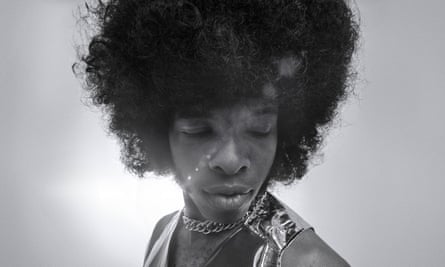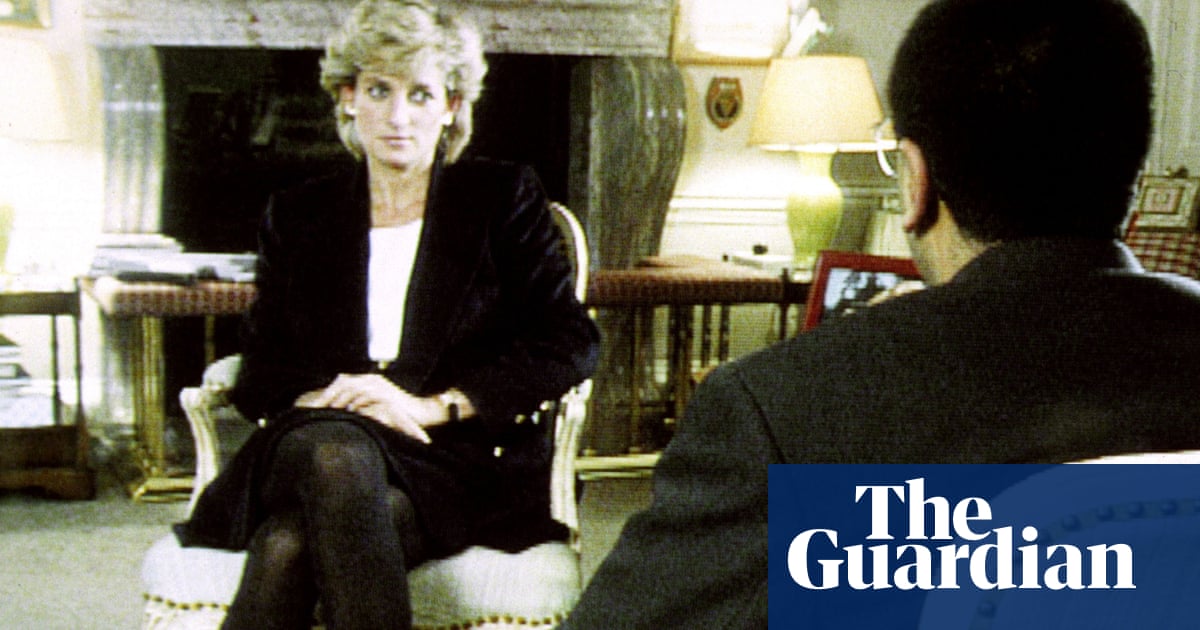Pop has rarely been able to look away from Sly Stone for both the right and the wrong reasons. At his peak Stone was a supernova, burning bright and fast in the late 60s and early 70s with Sly and the Family Stone hits that shone with glorious optimism and musical virtuosity. Yet Stone’s personal troubles derailed his career as he battled drug addiction, leading to Family feuds, squandered opportunities and decades of obscurity.
Sly’s story and what it says about expectations placed on Black artists is the subject of Sly Lives! (AKA The Burden of Black Genius), a vibrant and probing new documentary from the director Ahmir “Questlove” Thompson and the producer Joseph Patel. The release follows Summer of Soul, the pair’s mesmerizing film about 1969’s Harlem Cultural Festival, which won the best documentary Oscar in 2022. “Our premise is about Sly being the first post-civil rights Black star who has a white audience and a Black audience, and what that specific American burden is on Black artists,” says Patel.
The impact of the Texas-born artist on popular music is hard to overstate. In an imperial run of six albums between 1968 and 1974, Sly and the Family Stone, as the critic Steven Hyden wrote in the New York Times, “anticipated virtually every major trend in rhythm and blues of the next decade”. Unusually for a late-60s America still reeling from Jim Crow, Stone’s Family included members of multiple races and genders. Their sound was a heady and often joyous merging of funk, rock and psychedelic soul. The band crafted a swinging, sunny vision of togetherness (Everyday People, Dance to the Music), rousing anthems for equality (Stand!) as well as an agitated exploration of injustice in 1971’s classic There’s a Riot Goin’ On. With its American flag as artwork, the album was both a pointed answer to Marvin Gaye’s What’s Going On? as well as a display of Stone’s own innovation: it was the first major label record to use a drum machine.
As well as writing, producing, arranging and playing nearly a dozen instruments on Sly and the Family Stone albums, Stone produced the Great Society’s Somebody to Love, later memorably covered by Jefferson Airplane. (“He played every instrument and I just stood there with my jaw on the ground,” marvels the vocalist Grace Slick in the film.) “He’s got some magical way of weaving things together,” says Jimmy Jam. As half of the iconic production duo Jam & Lewis, he sampled a six-second snatch of Stone’s 1969 single Thank You (Falettinme Be Mice Elf Agin) for the sledgehammering bassline of Janet Jackson’s 1989 Rhythm Nation. “Sly created musical unity for my generation,” says Lewis. “To be able to sample that and create that for the next generation of listeners is an amazing thing.”
While other documentaries such as Michael Rubenstone’s 2017 film On the Sly have explored Stone’s story, Patel notes that “they’re all done by white guys of a certain age, and they all don’t really focus on his Blackness. What makes this movie different is it’s the first look at Sly and his Blackness from a Black perspective.
“It’s for hip-hop kids too,” he continues. Stone’s music has been sampled by Dr Dre, LL Cool J and Mobb Deep (as well as others from Beck to Brandy); Questlove and Patel sought to imbue their documentary with the urgency of the culture. In contrast to recent musical documentaries that predictably check off biographical beats, Sly Lives! sharply splices together footage from different decades and milieus, embodying the restless energy of hip-hop’s rebels without a pause. “We wanted it to feel like a Public Enemy album,” says Patel.
As well as artists including the disco god Nile Rodgers, the funk queen Chaka Khan and George Clinton of Parliament-Funkadelic, a raft of other music heavyweights act as what Patel calls “proxies for Sly”: Black artists who have taken idiosyncratic routes through fame. There’s Andre 3000 who gave up rap to play flute, the enigmatic hip-hop producer Q-Tip and D’Angelo, the mercurial genius who was hailed as the next Marvin Gaye at 23 and then mainly receded from public life. Questlove had a theory going into the project that, as Patel recalls, “when Black artists have success, they sometimes don’t feel like they’ve earned it, or there’s a lot of guilt and they self-sabotage”. Not everyone was ready to tackle these weighty issues on camera. “There’s a couple of other artists that canceled last-minute because they were freaked out by the subject matter,” says Patel. “I was really angry, but it proved our point.” (Stone himself, now 81, was unavailable to participate due to ill health.)
Sly Lives! does justice to its subject by celebrating Stone’s rarely paralleled talents as well as refusing to look away from his failings. (His daughter’s recollection of snorting chalk powder with Monopoly money to be like her dad is particularly bracing to watch.) With empathy and care, the film examines the bleak circumstances that might drive a Black artist who had been embraced by the white mainstream to drugs. In a frank interview, Chaka Khan, who has openly discussed her own struggles with addiction, offers a reasoning. “To self-medicate and self-soothe, and to try and attain a false sense of everything’s OK when it’s not.”
“[We] want people to realize how much Sly has given us,” says Patel. “And secondly, we want people to realize their own culpability in not showing these artists – Black artists specifically – grace, and letting them be human.”

That’s a level of respect not always felt in watching a newly uncovered Stone interview conducted by Maria Shriver, who peppers Stone with accusations about his downfall (Stone grips his armrest as if on a rollercoaster). And footage of an appearance on The Dick Cavett Show from 1970, the year that Life called Cavett “the brightest face on screen”, paints a less rosy picture of the TV host. “Could I dress like this and play with your group?” Cavett asks snidely, gesturing to his conservative suit. Stone, clad in all his finery, refuses to take the bait. He simply stares at the man serenely, like the funkiest pupil at a Buddhist monastery.
“I know how it feels to expect to get a fair shake,” Stone sang over heraldic brass and gospel harmonies in 1967’s Underdog. “But they won’t let you forget / That you’re the underdog and you’ve got to be twice as good.” Even as he spelled out the inequalities faced by Black artists of the time, many seemed to dislike that Stone dared to take pride in his hard-won achievements. At one point in the documentary, Questlove asks D’Angelo: “Why are we such workaholics?” The singer responds with a laugh. “Man, you know why.”
“There’s no Prince and the Revolution without Sly and the Family Stone,” says George Clinton. Last year, Beyoncé used Stone’s music in a promotional video for Cowboy Carter. A few days before the release of Sly Lives! some of the crew gathered at a Super Bowl party. Midway through his half-time show, Kendrick Lamar recreated the American flag with a formation of dancers dressed in red, white and blue. Patel and Questlove shot each other a look. “That image has a different meaning today than it did in 1971,” Patel says, referencing the indelible cover of There’s a Riot Goin’ On. “But it was exactly it” – further proof that Sly lives.
-
Sly Lives! (AKA The Burden of Black Genius) is now available on Hulu in the US and on Disney+ in other territories

.png) 2 months ago
23
2 months ago
23













































